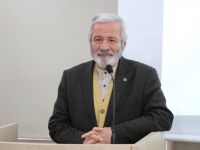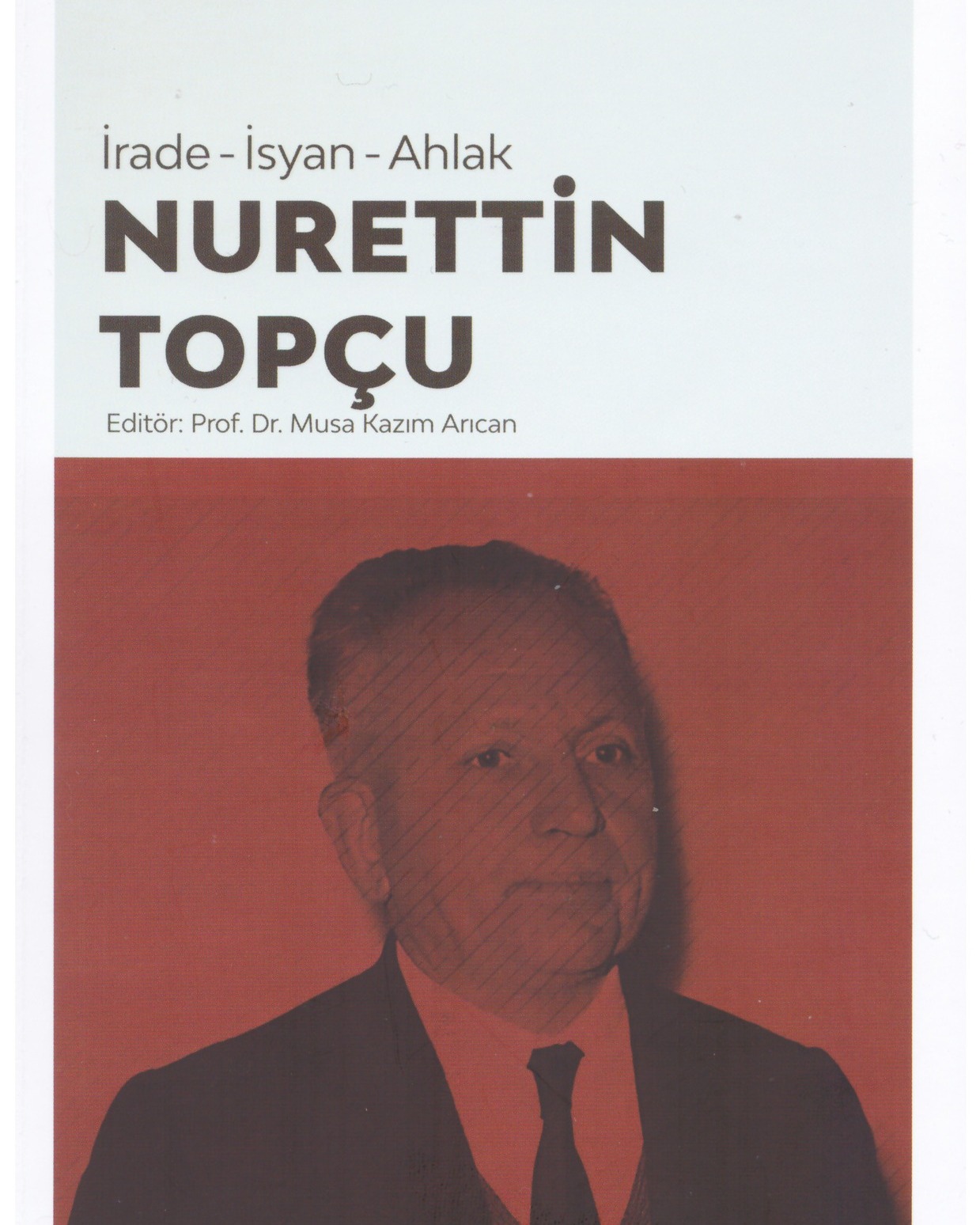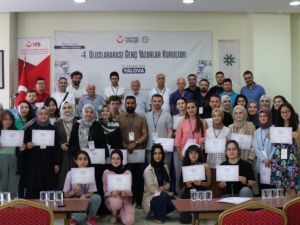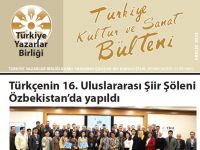Öz
Bu makale Japonya'nın NATO ile artan uluslararası işbirliğini ele almakta ve bunun Japonya'nın Ulusal Güvenlik Stratejisi (NSS) belgesi üzerindeki etkisini değerlendirmektedir. Meşru müdafaa hakkının kapsamı ve tanımı, Başbakan Ichiro Hatoyama'nın (1954-1956), ülkenin anayasasının savaş açma hakkından feragat etmesine rağmen, bir saldırı durumunda düşman üslerinin bombalanmasının meşru müdafaa hakkı temelinde haklı gösterilebileceğini belirlediği 1956 yılından bu yana siyasi gündemde yer almaktadır. Hatoyama'nın yakın gelecekte bir füze saldırısı durumunda Japonya'nın nasıl hareket edeceği sorusuna "Anayasanın ruhunun oturup ölmeyi beklememizi gerektirdiğini inanmıyorum" şeklinde cevap vermesi, bugün karşı saldırı kabiliyetine erişim için en önemli ön argümandır. Hatoyama'nın bu vurgusuna 66 yıl sonra pratik bir yanıt olarak, Aralık 2022'de iktidardaki Liberal Demokrat Parti (LDP) ve Komeito üyeleri, karşı saldırı kabiliyetini de içeren 2022 NSS belgelerini yayımladı. Ölümünden önce Abe, Japonya'da NATO ruhuna ve olası işbirliği alanlarına duyulan ihtiyacın altını çizmişti. NATO-Japonya ilişkileri üzerine yapılan okumalarda, endüstriyel işbirliği düzeyi, coğrafi uzaklık konusu, askeri işbirliğinin yöntemi ve ortaklığın temel motivasyonuna ilişkin soruların masanın ana başlıklarını oluşturduğu görülmüştür. NATO-Japonya ilişkilerinin en önemli belirleyicileri ABD-Japonya ittifakı ve Japon anayasasıdır. ABD-Japonya ortaklığı güçlenmeye ve yakınlaşmaya devam ederken, Japonya da anayasa revizyonu üzerinde çalışmaktadır.
Anahtar Kelimeler
Pasifizm, Ulusal Güvenlik Stratejisi, NATO, Karşı Saldırı Yeteneği, Anayasa Revizyonu
Normalizing Pacifism, The Counter-Strike Capability of Japan and NATO Relations
Introduction
The revised National Security Strategy (NSS) of Japan, released on December 16, 2022, seeks to address the various threats facing the country by focusing on the enhancement of its ability to counterstrike against hostile targets and the expansion of its defense budget to 2% of GDP (Japan Ministry of Defense, 2022). This new NSS has been developed in response to the invasion of Ukraine and the increasing tensions near Taiwan, as well as to the perceived threats from North Korea and China (Koshino, 2022). To counter these aggressive powers, Japan has established a security strategy called "integrated deterrence," which involves closer collaboration with the United States, its main ally. As part of this strategy, the Japanese Self-Defense Forces (JSDF) will work more closely with the US military, and Japan plans to purchase Tomahawk cruise missiles from the US to increase its range. The JSDF has also increased its defense budget and relocated 2,000 Ground Self-Defense Forces members to the Air and Maritime Self-Defense Forces. In addition, Japan is focusing on improving its cyber defense and the US and Japanese militaries are creating a permanent joint command center for joint operations. In the NSS, China is identified as a "strategic challenge," and Japan has indicated that it will retaliate against any movements towards Okinawa or the Senkaku Islands (Shin, 2022). To support the implementation of its new NSS, Japan has also begun closer to cooperate internationally, with a particular emphasis on its relationship with NATO as a non-NATO ally.
The relationship between Japan and NATO has grown stronger over time due to the shared security threats faced by both nations. Deceased Prime Minister Shinzo Abe (1954-2022) was the first Japanese leader to visit NATO Headquarters in Brussels in 2007 (NATO, 2007), and subsequent visits by Japanese leaders have further strengthened the partnership. Areas of intensive collaboration between Japan and NATO include maritime security, cyber defense, and nuclear non-proliferation. In December 2020, Japan became the newest foreign minister of the alliance, and in March 2022, Prime Minister Fumio Kishida visited NATO Headquarters. In June 2022, Kishida participated in the NATO Summit in Madrid along with the leaders of several non-NATO nations, including Australia, New Zealand, and South Korea. The Summit reflected the increased need for a unified response from NATO and its partners in the wake of Russia's invasion of Ukraine.
The increasing insecurity in the Indo-Pacific (Vuving & Inouye, 2020; Aki & Hiroshi, 2021; Ünlü, 2022) has highlighted the importance of improving interoperability between NATO and partner countries such as Japan in areas such as doctrine, operational procedures, equipment, and cross-national defense industrial sector integration. NATO has long advocated for united responses to major issues such as information security and standardized equipment. Japan, with its long-standing alliance with the US and growing cooperation with European countries, has already taken steps towards interoperability with NATO members in terms of equipment and doctrine. With the completion of the 2022 update to the NSS, Japan's defense policies and spending will become more comprehensive and inclusive, and Japan will seek to broaden its military cooperation with other nations. This could involve collaborating with a wider range of partners on various projects and efforts to enhance Japan's defense capabilities and increase its security.
This article explores Japan's efforts to strengthen its relations with NATO, focusing on the military realm, and examines the implications of this for Japanese businesses. It also assesses whether the necessary policies and procedures are in place or being considered to facilitate collaboration between Japan and both NATO and non-NATO partners. Additionally, the article analyzes the 2022 update to Japan's NSS in relation to the concept of "counterstrike capability" and how it impacts Japan's relationship with NATO.
US-Japan Relations
The US governments' prioritization of security concerns over economic ones during the Cold War was challenged by its efforts to balance the relationship between the US and Japan by emphasizing economic partnerships (Odehnal, 2020). In light of this, it was evident that the United States was willing to alter the nature of its relationship with Japan. The US also utilized various opportunities to communicate its goals and the direction of the evolution of the bilateral relationship (Penn, 2014). After the collapse of the Soviet Union and the end of the Cold War, the Bush administration recognized the need to adapt the alliance to the changing global landscape in the early 1990s. Given the significant global transformations occurring at that time, it was vital for the leaders of the US and Japan to meet and review their entire relationship (Hook et al., 2011; Oros, 2017). This review would help to ensure that the alliance remained relevant and effective in addressing the new challenges and opportunities presented by the changing international order.
It is remarkable that mutual cooperation has strengthened during the evolution of the alliance after the end of the Cold War. Particularly, Japan is a cornerstone of peace and security in the Asia-Pacific and Indo-Pacific region, and the formula for this alliance has been successful in US-Japan ties for the past 25 years, a remarkable performance (Satoh, 1995). There may be multiple reasons for this process. Although the worldwide environment has changed and the alliance has evolved in response, the alliance's relative importance to the US has remained constant. The scenario depicted by the formula had not changed substantially, so the formula remained valid. Second, it is likely that an effort was made to keep a consistent public statement across time. Since world affairs were so unpredictable, keeping a continuous stream of everyday happenings provided comfort. The country has benefited from this confidence in the cooperation being built during the course of multiple Democratic and Republican administrations. In times when international relations are chaotic and uncertain, the public finds solace in something unchanging and stable. During this time span, the alliance has seen a qualitative transition as it adapts to the post-Cold War international scene (Matsuoka, 2018). Things have evolved to allow for improved coordination between the two nations in the face of new dangers. The public's confidence in the relationship was maintained in part due to the consistency of its most fundamental and plain message.
Despite the opposition Democratic Party of Japan's (DPJ) regionalist reluctance towards the US, the Liberal Democratic Party (LDP) has played a major role in preserving the close partnership between the two countries. The DPJ ruled Japan from 2009-2012. It is well known that the DPJ government takes a cautious stance towards the US when discussing Japan's desire for greater "independence" in its foreign policy and closer links to Asia. However, the US has made it clear to its Japanese counterparts in the DPJ that it desires Japan as a full participant in all activities and sees Japan's efforts to expand ties with Asia as an opportunity for US-Japan alliance cooperation, so long as it serves the interests of both nations. For many years, the US has encouraged Japan to transition from a pacifist nation to a normal state by revising its constitution and enhancing its interoperability capabilities capabilities (Akgün & Çalış, 2003; Armitage & Nye, 2007; Miyagi, 2008; Morse, 1985). After the Russian invasion of Ukraine, North Korea's missile test, and Chinese claims over Taiwan, it is possible that this request will finally be met in pacifist Japan. After the revision of the National Security Strategy (NSS), Tetsuo Kotani, a professor of international politics at Meikai University and senior fellow at the Japan Institute of International Affairs, remarked that "A year ago, I could not have imagined that the Japanese people would embrace this kind of security program" (Dooley & Ueno, 2022). These modifications also pave the way for the US-requested expansion of operational military cooperation with Japan (MOFA, 2022).
However, Abe suggested the possible deployment of nuclear weapons by the US on Japanese territory in 2013 (Singh, 2015), fearing the reaction of the pacifist Japanese public (Johnson, 2022a). After the atomic bombings of Hiroshima (August 6, 1945) and Nagasaki (August 9, 1945), the Japanese developed a "nuclear allergy" to nuclear weapons (Tannenwald, 2018, pp. 91–92). Despite the fact that Japanese politicians have considered the possibility of admitting nuclear weapons into the country for decades, the nuclear allergy has been a major barrier. At the beginning of 2022, Abe and his close LDP lawmakers proposed the idea of a nuclear sharing agreement with the US, similar to NATO, which brought the Kishida government's draft NSS into the spotlight.
PM Fumio Kishida, who represents Hiroshima Prefecture in Japan's parliament and is a defender of the country's anti-nuclear principles, took office on October 4, 2021, as a leader who considers proposals to place nuclear weapons on Japanese soil and manufacture them in Japan as "unacceptable" (Busetto, 2022). Kishida's rhetoric on these nuclear arms-sharing negotiations with the US was influenced by the Japanese public's anti-nuclear sentiment and the upcoming 2022 Japanese House of Councillors election. Abe reintroduced the idea of nuclear sharing with the US in February 2022, LDP officials, including Kishida, pointed out that this proposal would have painful consequences. Indeed, Hiroyuki Miyazawa, Director of the LDP's National Defense Department, stated on a news program on March 29, 2022, that "almost everyone in Japan agrees that nuclear sharing is not suitable for Japan" (Reynolds, 2022).
In the midst of these developments, the US-Japan Alliance brings Japan closer to NATO, allowing it to obtain international operability capacity after revising its national defense policy to include counterstrike capacity. One of the most noticeable sentences of December 15, 2022, dated the NSS announcement (Japan Ministry of Defense, 2022) was that “Japan will solidify its preparations for the worst-case scenario”. As Japan's most significant ally, the US encourages (The White House, 2022) the idea of "integrated deterrence," in which allies collaborate to combat threats to international security. Thus, the new security strategy provides a road plan for the JSDF to collaborate closely with the US Army. Consequently, the NSS for 2022 recommended the creation of a permanent joint command center for the Ground, Navy, and Air Self-Defense Forces and the US military. To counterbalance China, documents urged increasing the JSDF's budget for defensive equipment parts and ammunition (Nurcan, 2022).
It is a certain that Japan's NSS for 2022 would enhance international cooperation and engagement. The US is the primary partner in the development of a counterstrike capability, a vital component of this strategy. However, Japan is also seeking to strengthen its ties with NATO, leading to increased attention on the relationship between NATO and Japan. This shift towards greater international cooperation aligns with Japan's efforts to enhance its security and defense capabilities in an increasingly complex and dynamic regional and global environment.
NATO-Japan Bilateral Relations
The NATO-Japan cooperation is mutually beneficial and includes the following key areas of collaboration. The partnership focuses on building capabilities and interoperability. Since joining the Interoperability Platform as part of the Partnership Interoperability Initiative in 2014, Japan has partially contributed to NATO's operations. In order to improve marine security training and encourage better interoperability, Japan has sent a Maritime Self-Defense Force training squadron to undertake maneuvers alongside NATO ships in the Mediterranean and Baltic Seas. The Japanese government has also appointed a liaison with NATO Maritime Command (NATO, 2022a).
Table 1. NATO - Japan Engagement

Source: (Lazar, 2022).
Japan has supported NATO's operations and missions, including assistance to the International Security Assistance Force (ISAF) and larger efforts to reconstruct and develop Afghanistan. Japan's efforts to organize the Tokyo Conference in July 2012 and offer $5 billion in funding for Afghanistan over five years helped to garner international support for the country (2009-2013). In the past, Japan sponsored the Afghanistan Peace and Reintegration Program's efforts to disarm, demobilize, and reintegrate former soldiers and insurgents. It also contributed to the Afghan National Army Trust Fund and financed a variety of other programs, including grassroots human security projects in various regions of Afghanistan (NATO, 2022d). Since the mid-1990s, NATO has conducted multiple peace-support operations in the Balkans, and Japan has contributed to these efforts. As a major contributor, it has helped the Balkans rebuild and rejoin the rest of Europe (Perić, 2021).
NATO and Japan have significantly contributed to various Trust Fund programs in other countries. These programs aim to strengthen the organization and security of munitions storage in Afghanistan (Press Release, 2008) and Tajikistan (NATO, 2012a), eliminate potentially hazardous pesticide supplies in the Republic of Moldova, and clean up munitions storage sites in Georgia (NATO, 2012b) and contaminated land in Azerbaijan (NATO, 2009). Recently, the Japanese government has contributed to the NATO Defense and Related Security Capacity Building Trust Fund (NATO, 2019). Japan also participates in the Science for Peace and Security (SPS) Program's counter-terrorism and landmine identification and clearance efforts. Research and multiyear partnerships with Japan focus on risk-free landmine detection, with Japanese researchers developing a semiconductor-based sensing device for airports, seaports, and other ports of entry (NATO, 2022c). Additionally, Japan has deployed an expert to the NATO Cooperative Cyber Defense Center of Excellence in Tallinn, Estonia, demonstrating its commitment to expanding international cyber security cooperation (CCDCOE, 2022).
In December 2020, Japan participated in its first NATO summit alongside Australia, Finland, the Republic of Korea, New Zealand, Sweden and the EU HR/VP to address the shift in the global balance of power and the rising of China. NATO and Japan have held a number of high-level political discussions in recent years and at the 2021 NATO summit in Brussels, members decided to enhance ties with Asia-Pacific allies (NATO, 2022b). On March 24, 2022, concurrent with a meeting of the G7 Heads of State and Government, Japanese Prime Minister Fumio Kishida met with NATO Secretary General Jens Stoltenberg at NATO Headquarters in Brussels. Russia's aggressive and cruel invasion of Ukraine triggered a special NATO Summit which was held earlier that day at NATO headquarters, followed by the G7 summit (NATO, 2022a).
NATO's philosophy is focused on (i) identifying opportunities related to technology trends, maturity levels, and roadmaps, (ii) gaining insight into business models, production timelines, standards, necessary skills, and potential opportunities for collaboration with industry, (iii) receiving updates on capability development from the NATO Industrial Advisory Group (NIAG), and (iv) being informed about potential collaborative opportunities for research, development, and production of military equipment and weapons systems (Priem, 2022). In contrast, the advanced Japanese industry focuses on (i) planning and funding sources to make strategic forward investment decisions, (ii) understanding operational requirements and the intended use of technologies, and (iii) learning from operational experiences in the field. The rapid development of China and the aggression of Russia present opportunities for deeper cooperation in the industrial sector between NATO and Japan to align policies (Kyodo, 2020).
Industrial cooperation involves working together to achieve a shared goal, whether it be through the exchange of resources, technology, or expertise. One important factor to consider is the role of physical distance in this cooperation. While it may be easier to collaborate in person, advances in technology have made it possible for individuals and organizations to work together effectively from a distance. In the military, cooperation is often essential for the successful execution of missions and the protection of national interests. To improve multilateral communication capabilities and share the same strategies and doctrines, it is important for military forces to prioritize standardization and transformation in their bilateral relations. This can help ensure that all parties are working towards the same objectives and are able to effectively support one another in achieving them. The main goal of NATO-Japan cooperation is to improve multilateral communication capabilities and share the same strategies and doctrines. Standardization and transformation will be the final level of bilateral relations (Nagashima, 2022).
The Counter-Strike Capability
Japan's NSS for 2022 focuses on collaborating with partners or allies to execute a counter-strike capability against enemy bases. In response to the worsening security situation, the government has decided to limit these strikes to "military" targets only. However, "military" targets may be broadly defined to include enemy bases, command centers, and other infrastructure. In November 2022, the ruling LDP and its junior coalition partner, Komeito, released a policy statement on this issue at a working-level conference. The Kishida government, which is responsible for revising the NSS in December 2022, has publicly announced its intention to acquire the ability to target enemy bases. This would allow Japan to strike and damage enemy missiles before they are launched from land outside Japan, as well as target command centers. Initially, Komeito, which is commonly referred to as a "pacifist party," was hesitant to enable such a capability due to public skepticism and uncertainty about the decision. Komeito members suggested that the military should only have a deterrent and defensive capability and that the term "enemy base attack capability" should be revised to avoid misunderstanding by the general public. However, Komeito members also acknowledged that building, deploying, and maintaining a strike capability would be a lengthy and costly process for Japan (The Asahi Shimbun, 2022). There are also questions about how these weapons would be used and whether Japan will develop its own independent targeting capabilities or continue to rely on the US. Additionally, there are concerns that increasing defense capacity could significantly exceed current defense expenditures and strain the country's budget.
In December 2022, however, party members have begun seriously considering backing the LDP's position on several topics (Kyodo, 2022b). Keiichi Ishii, secretary general of Komeito, stated during a November 2022 news conference that Japan will need the ability "not to retaliate, but to prevent" future armed attacks on Japan. North Korea, which has conducted numerous ballistic missile tests, was cited as an example of a potential aggressor. The government's position on Japan's security posture, which is to be entirely defensive and refrain from preemptive strikes, has not changed. The government is currently developing long-range missiles as part of its ability to attack enemy bases. Tokyo has entrusted the US with its security since the US promised in the 1960 Japan-United States Security Treaty to protect Japanese-controlled territory from military attack (Kyodo, 2022a). A government group mostly consisting of military strategy and public finance experts has supported retaining the plan to acquire the enemy base strike capability in 2022.
Japan's foreign and security policies are depicted by the NSS and the Medium-Term Defense Program. In consideration of North Korea's nuclear weapons development and China's military buildup, Japan has enlarged the scope of its NSS (Lee, 2022). Japan has strongly emphasized "counterstrike capability" in new security documents under the war-renouncing Constitution, which would allow the country to shoot down threatening missiles launched from abroad. However, Japan has reiterated its commitment to a self-defense-focused security strategy and has vowed not to become a military force. Despite this, Japan has plans to increase its supply of long-range missiles and purchase foreign weaponry. The government is planning to spend $5 trillion on military defense over a five-year period starting in the fiscal year 2023.
Japan has never developed a nuclear deterrent due to its reliance on the US for security, but now plans to fire a missile in self-defense if necessary. Force may be used if Japan or a close ally is attacked. If all other measures fail, the force can be used to deactivate opposing missiles. The counterstrike on enemy territory will prevent missiles from being launched. Japan has also encouraged defense exports and deployed cyber security measures (Kyodo, 2022c). The new NSS mentions the necessity for legislation by referring to "active cyber defense," which monitors and invades attack sources at the early stage. Japan's cyber defense relies on responding to attacks, while the US and Europe have no response systems. Counterstrike and prevention are not only direct armed attacks, but also the development of similar capabilities in cyberspace are important in terms of demonstrating the comprehensiveness of the NSS.
Findings and Prepositions
Japan is taking on increased global responsibilities and the US appreciates, acknowledges, and values Japan's efforts to play a larger role in international affairs to influence global trends towards a more peaceful, prosperous, and democratic environment. The relationship between the US and Japan is dynamic and formidable, as they not only reflect on their shared history but also actively shape their collective future. Japan's understanding of global security issues has expanded and the country is increasingly fulfilling its potential as a strategic partner and exceptional global leader. The recent convergence of the US and Japan in the NSS on Common Strategic Objectives, such as the establishment of a Joint command center (Dooley & Ueno, 2022), will help to further develop their alliance on regional and global levels. The beginning of the 21st century presents a unique opportunity for the US and Japan to adapt their alliance to the changing threats and opportunities of this new century. The alliance between these two countries was originally formed in the aftermath of World War II and the perceived threat posed by the Soviet Union. Since the dissolution of the Soviet Union, the security landscape has evolved significantly, requiring a reevaluation of the roles and responsibilities of the US-Japan alliance. This presents an opportunity to realign the alliance to meet the challenges and opportunities of the current era and ensure that it remains relevant and effective in addressing the security needs of both countries in the coming years. The revised contents of the NSS describe the US-Japan alliance as a chance to unite forces in the face of impending threats and attractive new possibilities, and this time NATO is also featured. The collaboration between the two sides is evolving in ways that have never occurred before.
Additionally, the Quadrilateral Security Dialogue (QUAD) between the US, Australia, India, and Japan has continued to evolve in response to China's growing influence in Asia (Toru et al., 2021). Japan and India's military exercises in the Indian Ocean and their agreement on new political and economic action plans have taken this dialogue beyond what was originally expected. Yoichiro Sato's work (Chotani & Sato, 2020; Sato, 2021a, 2021b; Sato & Seng, 2015), suggests that this initiative will provide insight into the type of foreign policy Japan will pursue in response to similar developments, especially given China's rising influence (Xinhua, 2021) and clear goals (Esenbel, 2018). The United Kingdom is also seeking to be a key partner in this dialogue, with its foreign policy focus shifting back to the Indo-Pacific due to the urgency of the BREXIT decision (Balfour, 2021; Global Security, 2021). The revised version of Japan's NSS also explicitly states that participation in the QUAD and similar initiatives will be more inclusive than in the past (Funabashi et al., 2021; Glosserman, 2021). It is important to consider not only the fact that the NSS allocates 2% of GDP to defense spending, but also the orientation of Japan's high-tech sector towards the demand for armaments. Japan has already started to acquire the advanced military technology necessary to develop its own counterstrike capabilities (Global Security, 2020; Kelly et al., 2022; Kyodo, 2020; Sputnik, 2021).
After his death, Abe's views on nuclear sharing have not yet led to a change in Japan's long-standing policy against nuclear weapons. However, his initiative has helped to pave the way for a major overhaul of Japan's defense and security posture (McNeill, 2022), which became necessary in light of Russia's invasion of Ukraine (Harris, 2022). Initially, Abe's proposal to abandon nuclear weapons was opposed by the ruling LDP, but the Russian aggression led to a reconsideration of this issue. For those who have long advocated for a more comprehensive and normal national security policy beyond pacifism, Abe's proposal served as an opportunity to push for change. Before his assassination in June 2022, Abe, with his nuclear-sharing proposal, had drawn attention to what could happen if countries were unable to defend themselves against nuclear-armed neighbors. Russia's invasion of Ukraine, which he pointed to as an example, prompted LDP officials to conduct a comprehensive review of the NSS. Abe also referred to China's growing military capacity and nuclear-armed North Korea's progress in missile technology. In particular, North Korea's long-range missile test in 2021 (BBC, 2022) and its subsequent test on March 16, 2022, brought Kishida closer to Abe's rhetoric, reiterating his statements that the country's defense capacity would be "greatly strengthened" and that "every option will be considered" (Kajimoto & Takenaka, 2021) to achieve the capacity to strike enemy bases if necessary. A poll conducted by the Japanese newspaper Yomiuri in April 2022 revealed that popular support for boosting Japan's military had climbed from 27% to 64% (The Yomiuri Shimbun, 2022). The NSS reflects this support in practice in December 2022. The number of favorable and unfavorable replies to an increase in Japan's capacity to attack enemy bases was the same, which is an interesting finding in the poll. This indicated that support was conditional upon the protection of national borders.
Just before the October 2021 Lower House (Shūgiin-衆議院) elections, the LDP publicly announced for the first time that it intended to double the country's defense spending to 2% of GDP. Although this goal was initially thought to be unpopular, the change was strongly supported by Kishida, Abe, and his brother, Defense Minister Nobuo Kishi (NHK, 2022). Abe and Kishi cited Germany's decision to raise defense spending to 2% of GDP as an example of their support. In addition, following Russia's invasion of Ukraine on February 24, Japan's defense budget increase was justified by the fact that, although Japan is not a member of NATO, the alliance has set a similar defense spending increase for each member (Johnson, 2022b). Kishi continued to support this policy, stating, "We think that increasing the proportion of defense spending in GDP makes definite sense in terms of timing." Thus, in March 2023, Japan's defense budget reached a record high of $44 billion, setting a new record for the eighth consecutive year. This represents an increase of 1.1% over the previous year's initial budget (Nikkei, 2022). It is noteworthy that the realization of the 2% target coincides with the NSS.
If the military equilibrium in the international system continues to worsen, as it has during the Russia-Ukraine war, a conflict between Russia and Japan over the Kuril Islands dispute is possible (Akçadağ & İsmayilov, 2016). Moreover, the fact that Japan has changed its NSS creates challenges for its full implementation. Especially in light of Japan's current economic stagnation, the attainability of this objective is unclear. A scenario assuming yearly economic growth of 2% would require a consistent annual rise in military spending of 9.5% over a ten-year period, or a rate of increase of 7% over a fifteen-year period. Even if GDP growth remained at 1.5%, the NSS estimates that defense spending would need to climb by 5-6% annually. In this scenario, the Japanese economy runs the risk of succumbing to debt financing constraints resulting from future social spending commitments and challenges in preserving monetary stability. This will result in heterodox orientations in Japanese economic policy, a term used to describe activities that deviate from conventional perspectives and methods. This degree of rise in defense expenditures would be burdensome without significant reductions in social spending and other expenditure categories. During the Covid-19 global outbreak, even a 1% rise in defense spending was questioned in domestic rhetoric and international expectations (Wallace, 2021). Japan is likely to share this responsibility with multilateral alliances and platforms such as NATO and QUAD, rather than shouldering the burden alone.
Conclusion
In several aspects, the 2022 NSS partially achieved the seeds that Abe cultivated during his reign in order to return Japan to a normal country. The course of the Ukraine-Russia war and the heightened sensitivity to defense issues in the country were decisive in the NSS. Abe's policies, which did not find a broad base in terms of updating defense policies during his time as prime minister, brought Japan the right to acquire a counter-attack capability with the impact of developments in the international system. Although the Kishida government has adopted a policy of abstention against the Abe era and its practices, Japan is now a participant or candidate in regional and global security organizations. The country's shift away from a "full pacifist defense" posture brought a break in Japanese security policies compared to previous eras. The impact of the change brought about by the NSS depends on the persistence of public support for internalized pacifism within the country and the attitude of its principal ally, the US.
For political and systemic reasons, such a significant break from the past in terms of security policy in Japan was initiated in 2022 with the NSS. As a result of Russia's aggression against Ukraine, the influence of NATO as the military security umbrella of the countries was once again felt. In this regard, Japan has gradually implemented new practices that will increase its defense capability through closer coordination with the US alliance and NATO. The US and Japan have a long history of cooperation and friendship, and both countries recognize the importance of working together on the international level. The goal of becoming equal partners and building mutual respect is a long-term objective that requires ongoing efforts and engagement. One way in which this can be achieved is through collaboration in NATO, which provides a forum for countries to work together on issues of common concern and build stronger relationships. As the US and NATO focus on the challenges and opportunities presented by China's rising influence in the region, Japan's role as a key ally and partner becomes even more important. Japan's development and commitment to democracy, and its alliance with NATO, provide a valuable opportunity for Japan to contribute to regional security and stability. Japan is also taking steps to increase its own strength and focus on its democratic values and beliefs as it revises its security vision and looks to play a larger role in the region.
TYB Akademi 37, Ocak 2023
References
Akçadağ, E., & İsmayilov, E. (2016). Ukrayna Krizinin Rusya ve Japonya Arasındaki Kuril Adaları Sorununa Etkisi. Journal, 12(48), 95–115.
Akgün, B., & Çalış, Ş. H. (2003). Reluctant Giant: The Rise of Japan and Its Role in the Post-Cold War Era. Perceptions: Journal of International Affairs, 8(1), 1–13. https://dergipark.org.tr/en/pub/perception/625251
Aki, T., & Hiroshi, N. (2021, September 7). “Free and Open Indo-Pacific” under the US-China Conflict: For coexistence of strategic competition and economic cooperation [Yoshioka Keiko]. https://www.japanpolicyforum.jp/diplomacy/pt2021090720062911509.html
Armitage, R. L., & Nye, J. S. (2007). The U.S.-Japan Alliance. Center for Strategic and International Studies.
Balfour, R. (2021, September 21). What the U.S.-British-Australian Security Pact Means for Europe. Carnegie Endowment for International Peace. https://carnegieeurope.eu/strategiceurope/85392?utm_source=carnegienewsletter&utm_medium=email&utm_content=buttonlink&mkt_tok=MDk1LVBQVi04MTMAAAF_1M3gGUX-ilC0_WxpH5f1wl5j8hv4x0j73t26YtcmsiOvZsdsW7YtyiRC5-3LnZRSf3Jh55oNlkm-xjysGxIjkTVGkx553Fx88_jBnVDxT0Dd
BBC. (2022, March 24). North Korea tests banned intercontinental missile. https://www.bbc.com/news/world-asia-60858999
Busetto, A. (2022, March 1). ‘Reality of World Security’: Shinzo Abe’s Nuclear Sharing Talk Sparks Debate | JAPAN Forward. https://japan-forward.com/reality-of-world-security-shinzo-abes-nuclear-sharing-talk-sparks-debate/
CCDCOE. (2022). The NATO Cooperative Cyber Defence Centre of Excellence is a multinational and interdisciplinary hub of cyber defence expertise. https://ccdcoe.org/
Chotani, V. M., & Sato, Y. (2020, October 18). Now is a good time for Japan to re-focus on quality infrastructure lending in the Indo-Pacific. The Japan Times. https://www.japantimes.co.jp/opinion/2020/10/18/commentary/japan-commentary/japan-quality-infrastructure/
Dooley, B., & Ueno, H. (2022, December 16). Japan Moves to Double Military Spending, With a Wary Eye on China. The New York Times. https://www.nytimes.com/2022/12/16/world/asia/japan-national-security-strategy.html
Esenbel, S. (2018). Değişen Dünya Düzeni Işığında Japonya ve Güney Kore’nin 21. Yüzyıldaki Jeopolitik Vizyonları ve Dış Politikaları (Dış Politika Forumu Araştırma Raporu). Boğaziçi Üniversitesi-TÜSİAD.
Funabashi, Y., Hosoya, Y., & Jimbo, K. (2021, May 18). Managing the U.S. and China: Japan’s best way forward. The Japan Times. https://www.japantimes.co.jp/opinion/2021/05/18/commentary/japan-commentary/japan-international-order-2/
Global Security. (2020, October 30). Japan Unveils the Lead Developer of its New Stealth Fighter Jet. https://www.globalsecurity.org/wmd/library/news/japan/2020/japan-201030-sputnik01.htm?_m=3n%2e002a%2e2913%2ezq0ao0aunu%2e2ox5
Global Security. (2021, December 22). UK and Japan to develop future fighter jet engine demonstrator. https://www.globalsecurity.org/wmd/library/news/uk/2021/uk-211222-ukmod01.htm?_m=3n%2e002a%2e3212%2ezq0ao0aunu%2e2z51
Glosserman, B. (2021, March 2). Japan, the national security superpower. The Japan Times. https://www.japantimes.co.jp/opinion/2021/03/02/commentary/japan-commentary/national-security-military-united-states-australia-india-defense/
Harris, T. (2022, April 13). The U.S.-Japan Partnership Is Healthy, but Has a Long To-Do List. World Politics Review. https://www.worldpoliticsreview.com/japan-us-relations-are-healthy-but-both-sides-hope-for-more/
Hook, G. D., Gilson, J., Hughes, C. W., & Dobson, H. (2011). Japan’s International Relations: Politics, Economics and Security. Routledge.
Japan Ministry of Defense. (2022, December). 2022 National Security Strategy. Japan Ministry of Defense. https://www.mod.go.jp/en/
Johnson, J. (2022a, February 27). Japan should consider hosting U.S. nuclear weapons, Abe says. The Japan Times. https://www.japantimes.co.jp/news/2022/02/27/national/politics-diplomacy/shinzo-abe-japan-nuclear-weapons-taiwan/
Johnson, J. (2022b, March 4). How Germany’s historic shift on military spending could affect Japan’s defense plans. The Japan Times. https://www.japantimes.co.jp/news/2022/03/04/national/germany-prompt-japan-defense-change/
Kajimoto, T., & Takenaka, K. (2021, December 6). Japan PM seeks to boost workers’ wages, defence capability. Reuters. https://www.reuters.com/world/asia-pacific/japan-strengthen-defence-posture-drastically-pm-kishida-2021-12-06/
Kelly, T., Sandle, P., & Kubo, N. (2022, December 9). Japan, Britain and Italy to build jet fighter together. Reuters. https://www.reuters.com/world/japan-britain-italy-build-joint-jet-fighter-2022-12-09/
Koshino, Y. (2022, December). Japan’s transformational national-security documents. IISS. https://www.iiss.org/blogs/analysis/2022/12/japans-transformational-national-security-documents
Kyodo. (2020, December 19). Defense Ministry to team up with Keidanren to promote arms exports. The Japan Times. https://www.japantimes.co.jp/news/2020/12/19/national/defense-ministry-keidanren-arms-exports/
Kyodo. (2022a, November 26). Japan eyes using enemy base strike capability with U.S. The Japan Times. https://www.japantimes.co.jp/news/2022/11/26/national/ldp-komeito-counterstrike-us-military/
Kyodo. (2022b, December 2). Japan ruling bloc agrees on acquiring “counterstrike capability.” The Japan Times. https://www.japantimes.co.jp/news/2022/12/02/national/ldp-counterstrike-capability-agreement/
Kyodo, N. (2022c, December 10). Japan to include ’counterstrike capability in key security documents. The Japan Times. https://www.japantimes.co.jp/news/2022/12/10/national/japan-counterstrike-capability-security-documents/
Lazar, L. (2022, September 29). NATO Engagement with industry. https://www.youtube.com/watch?v=_hp8ouBDDy4
Lee, M. Y. H. (2022, December 16). Wary of China, Japan unveils sweeping new national security strategy. Washington Post. https://www.washingtonpost.com/world/2022/12/16/japan-defense-strategy-missiles/
Matsuoka, M. (2018). Hegemony and the US–Japan Alliance. Routledge.
McNeill, D. (2022). The Abe Legacy: A Compendium. The Asia-Pacific Journal: Japan Focus, 20(16), 1–33. https://apjjf.org/2022/16/McNeil.html
Miyagi, Y. (2008). Japan’s Middle East Security Policy: Theory and Cases (1st Edition). Routledge.
MOFA. (2022). Joint Statement of the Security Consultative Committee (“2+2”). https://www.mofa.go.jp/files/100284739.pdf
Morse, R. A. (1985). Japan and the Middle East in Alliance Politics. University Press of America.
Nagashima, J. (2022, September 29). NATO-JAPAN Defense Industrial Cooperation Viewpoint from Japan. https://www.youtube.com/watch?v=_hp8ouBDDy4
NATO. (2007, January 12). Prime Minister of Japan, Mr. Shinzo Abe vists NATO. NATO. http://www.nato.int/cps/en/natohq/news_48080.htm
NATO. (2009, April 17). Japan contributes to a NATO Trust Fund Project in Azerbaijan. NATO. http://www.nato.int/cps/en/natohq/news_53278.htm
NATO. (2012a, January 31). NATO-sponsored project to help secure dangerous munitions in Tajikistan. NATO. https://www.nato.int/cps/en/natohq/news_83886.htm
NATO. (2012b, December 18). NATO - News: Building capacity to clear unexploded ordnance in Georgia, 18-Dec.-2012. https://www.nato.int/cps/en/natolive/news_93217.htm
NATO. (2019). Summary of Ongoing Trust Fund. https://www.nato.int/nato_static_fl2014/assets/pdf/pdf_2019_02/20190214_190214-trust-funds.pdf
NATO. (2022a, May 23). Relations with Japan. NATO. https://www.nato.int/cps/en/natohq/topics_50336.htm
NATO. (2022b, July 12). Relations with Asia-Pacific partners. NATO. https://www.nato.int/cps/en/natohq/topics_183254.htm
NATO. (2022c). The NATO Science for Peace and Security (SPS)—Japan (Country Flyer2022). https://www.nato.int/science/country-fliers/Japan.pdf
NATO. (2022d, December 6). ISAF’s mission in Afghanistan (2001-2014). NATO. https://www.nato.int/cps/en/natohq/topics_69366.htm
NHK. (2022, April 3). Former Prime Minister Abe: "Increase defense spending to avoid conflict with China. 安倍元首相「中国との衝突避けるためにも防衛費増額を」. NHKニュース. https://www3.nhk.or.jp/news/html/20220403/k10013565851000.html
Nikkei. (2022, April 6). LDP to Propose Defense Spending Increase in April in Preparation for Taiwan Contingency [防衛費増、自民が4月中に提言 台湾有事へ備え[. 日本経済新聞. https://www.nikkei.com/article/DGXZQOUA017S00R00C22A4000000/
Nurcan, E. S. (2022, December 16). Updates on Japanese Defense Documents Arrive. Technopolitics and Asia. https://medium.com/esnurcan/updates-on-japanese-defense-documents-arrive-ff53842a68c0
Odehnal, J. (2020). Economic, Security, and Political Determinants of Military Spending in NATO Countries. Defence and Peace Economics, 31(5), 517–531. https://doi.org/10.1080/10242694.2018.1544440
Oros, A. L. (2017). Japan’s Security Renaissance: New Policies and Politics for the Twenty-First Century. Columbia University Press.
Penn, M. (2014). Japan and the War on Terror: Military Force and Political Pressure in the US-Japanese Alliance. I.B. Tauris.
Perić, M. (2021). Japanese foreign policy towards the Western Balkans: Kosovo crisis, instability in Macedonia, and European integration between 1998-2013. Australian and New Zealand Journal of European Studies, 12(2).
Press Release, N. (2008, May 7). NATO assists Afghanistan to improve munitions stockpile safety. https://www.nato.int/docu/pr/2008/p08-062e.html
Priem, R. (2022, September 29). NATO Industrial Advisory Group (NIAG). ISIC Defense Industry Forum, ISIC Defense Industry Forum. https://www.youtube.com/watch?v=_hp8ouBDDy4
Reynolds, I. (2022, February 28). Japan PM Opposes Sharing U.S. Nuclear Weapons After Abe Proposal. Bloomberg.Com. https://www.bloomberg.com/news/articles/2022-02-28/japan-pm-opposes-sharing-u-s-nuclear-weapons-after-abe-proposal
Sato, Y. (2021a). Industrial Policies, the East Asian Miracle, and Regional Integration after the 2008 Global Financial Crisis. In Kolmaš, Michal, and Yoichiro Sato, eds. Identity, Culture and Memory in Japanese Foreign Policy. Peter Lang-US.
Sato, Y. (Director). (2021b, May 16). The QUAD in Japan’s Image. Boğaziçi University Asian Studies Center. https://www.youtube.com/watch?v=KW_OzhZDzAA
Sato, Y., & Seng, T. S. (2015). United States Engagement in the Asia-Pacific. Cambria Press.
Satoh, Y. (1995). Emerging trends in Asia‐Pacific security: The role of Japan. Pacific Review, 8(2), 267–281. https://doi.org/10.1080/09512749508719137
Shin, K. (2022, March 18). Japan’s National Security Strategy: A Delicate Task. https://thediplomat.com/2022/03/japans-national-security-strategy-a-delicate-task/
Singh, B. (2015). The Development of Japanese Security Policy: A Long-Term Defensive Strategy. Asia Policy, 19(1), 49–64. https://doi.org/10.1353/ASP.2015.0006
Sputnik. (2021, January 1). Japan Plans to Develop Unmanned Fighter Aircraft by 2035. https://www.globalsecurity.org/wmd/library/news/japan/2021/japan-210101-sputnik01.htm?_m=3n%2e002a%2e2962%2ezq0ao0aunu%2e2qlb
Tannenwald, N. (2018). How Strong Is the Nuclear Taboo Today? The Washington Quarterly, 41(3), 89–109. https://doi.org/10.1080/0163660X.2018.1520553
The Asahi Shimbun. (2022, May 30). Komeito exec open to talks on letting SDF strike enemy bases. The Asahi Shimbun. https://www.asahi.com/ajw/articles/14633269
The White House. (2022, December 16). Statement by National Security Advisor Jake Sullivan on Japan’s Historic National Security Strategy. The White House. https://www.whitehouse.gov/briefing-room/statements-releases/2022/12/16/statement-by-national-security-advisor-jake-sullivan-on-japans-historic-national-security-strategy/
The Yomiuri Shimbun. (2022, April 4). April 2022 Telephone National Poll Questions and Answers (2022年4月 電話全国世論調査 質問と回答). 読売新聞オンライン. https://www.yomiuri.co.jp/election/yoron-chosa/20220403-OYT1T50144/
Toru, I., Tomohiko, S., & Satoru, M. (2021, September 11). The Quad: Effectiveness of “Cooperation in Peacetime Situations.” Discuss Japan. https://www.japanpolicyforum.jp/diplomacy/pt2021091117070211544.html
Ünlü, H. (2022). Politics of South Asia. In South Asia Analyses (pp. 13–41). South Asia Strategic Research Center.
Vuving, A. L., & Inouye, D. K. (2020). Hindsight, insight, foresight: Thinking about security in the Indo-Pacific. Asia-Pacific Center for Security Studies. https://dkiapcss.edu/wp-content/uploads/2020/09/Hindsight-Insight-Foresight-Thinking-about-Security-in-the-Indo-Pacific.pdf
Wallace, C. (2021, November 10). Kishida’s opportunity to shake up Japanese defence policy. East Asia Forum. https://www.eastasiaforum.org/2021/11/11/kishidas-opportunity-to-shake-up-japanese-defence-policy/
Xinhua. (2021, April 19). US, Japan not qualified to define int’l order: FM spokesperson. http://www.china.org.cn/world/2021-04/19/content_77420811.htm































Türkçe karakter kullanılmayan ve büyük harflerle yazılmış yorumlar onaylanmamaktadır.